Intentar ORO - Gratis
Bringing Back The HOYA
The Gardener
|September 2020
For many of us, hoyas are those plants our grandmothers had growing on the 'stoep; or in a pot that hung from the dining room celling in a macrame pot hanger

The genus Hoya contains between 200 and 300 different species. In addition, there are also lots of hybrids and cultivars of certain species, making it an incredibly diverse group of plants. Hoya plants go by numerous different names: waxflower, wax plant, wax creeper, wax vine, porcelain flower and Mary’s tears, to name just a few.
These plants have a home range that stretches from India in the west to China in the east, and reaches downward through Thailand, Vietnam, and Malaysia, through all the Southeast Asian islands, and even extends to the northern parts of Australia. Because of this wide distribution range, which includes many different habitats, these plants have varying growing requirements, which we need to keep in mind when we want to keep them here in South Africa.
In general, most of the hoyas can be described as tropical, while certain species are subtropical. The subtropical species are the easiest to grow in our climate, as the tropical ones need high temperatures coupled with high humidity throughout the year to perform at their best.
The growth habits of the different species vary greatly, but most can be classified as twining climbers that in some cases produce roots along the twining stems to adhere to the bark of trees or rocks the plants are climbing on. Some hoya species form more of a scraggly bush. Many of the species will grow in the soil or in leaf litter and then climb up a tree, or as an epiphyte on the tree. There are a few species of hoya that are almost leafless, others have extremely tiny leaves, while the leaves of a species such as the aptly named Hoya macrophylla
Esta historia es de la edición September 2020 de The Gardener.
Suscríbete a Magzter GOLD para acceder a miles de historias premium seleccionadas y a más de 9000 revistas y periódicos.
¿Ya eres suscriptor? Iniciar sesión
MÁS HISTORIAS DE The Gardener

The Gardener
Preserving apples
The end of the apple season means that apples need to be preserved for the next six months until the next harvest is ready.
3 mins
July/August 2025
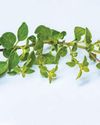
The Gardener
Golden Oregano
Origanum vulgare ‘Aureum’, as its name suggests, is golden yellow in full sun and cool weather. These bright herbs are highly fragrant, with a classic oregano taste and aroma, and are often used in the kitchen for pasta and pizza. In summer, the yellow leaves will be covered with small pink and purple flowers.
1 min
July/August 2025
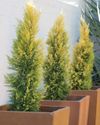
The Gardener
Potting up a conifer
Conifers generally are well-behaved plants with interesting, evergreen foliage and mostly formal and neat growth habits. This makes them stately candidates for roomy containers.
1 mins
July/August 2025
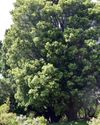
The Gardener
Enduring and venerable trees
There cannot ever be a good reason not to plant a tree, and somewhere there is just the right tree for you...
3 mins
July/August 2025
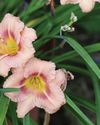
The Gardener
Daylilies make a comeback
Daylilies are making a comeback in 2025 with even more shapes, twists, ruffles, pleats, picotees, curves, and stunning colours and colour combinations. There are singles and doubles, big and small flowers, each unique, and yes, they only last a day! They do, however, have another flower bud just behind that one, ready to show off the next day.
1 min
July/August 2025
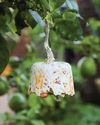
The Gardener
How to make a fat ball
Some birds love a fat ball in winter to boost their energy levels. These are easy to make and a fun project to do with the kids.
1 min
July/August 2025

The Gardener
The Princess and Obsession
It only takes two wonderful modern hybrids of old garden favourites to prepare a garden and containers for an unforgettable spring performance.
1 mins
July/August 2025
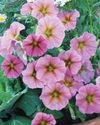
The Gardener
Pink and pretty
Pink colour shifters with hot appeal...
2 mins
July/August 2025

The Gardener
GROW the WALL
If you want lots of flowers in plantable concrete retaining wall blocks or lush stems and foliage cascading over dry stone walls, we have good plant suggestions for you!
5 mins
July/August 2025

The Gardener
Winter indoor plant care
Winter can be a tough time for your houseplants; a drop in natural light, drier air, and cold drafts can all influence their lush appeal. As plant lovers, spending more time indoors in winter creates opportunities to keep a close eye on your leafy companions and make some changes to avoid these common winter blues.
1 min
July/August 2025
Translate
Change font size
